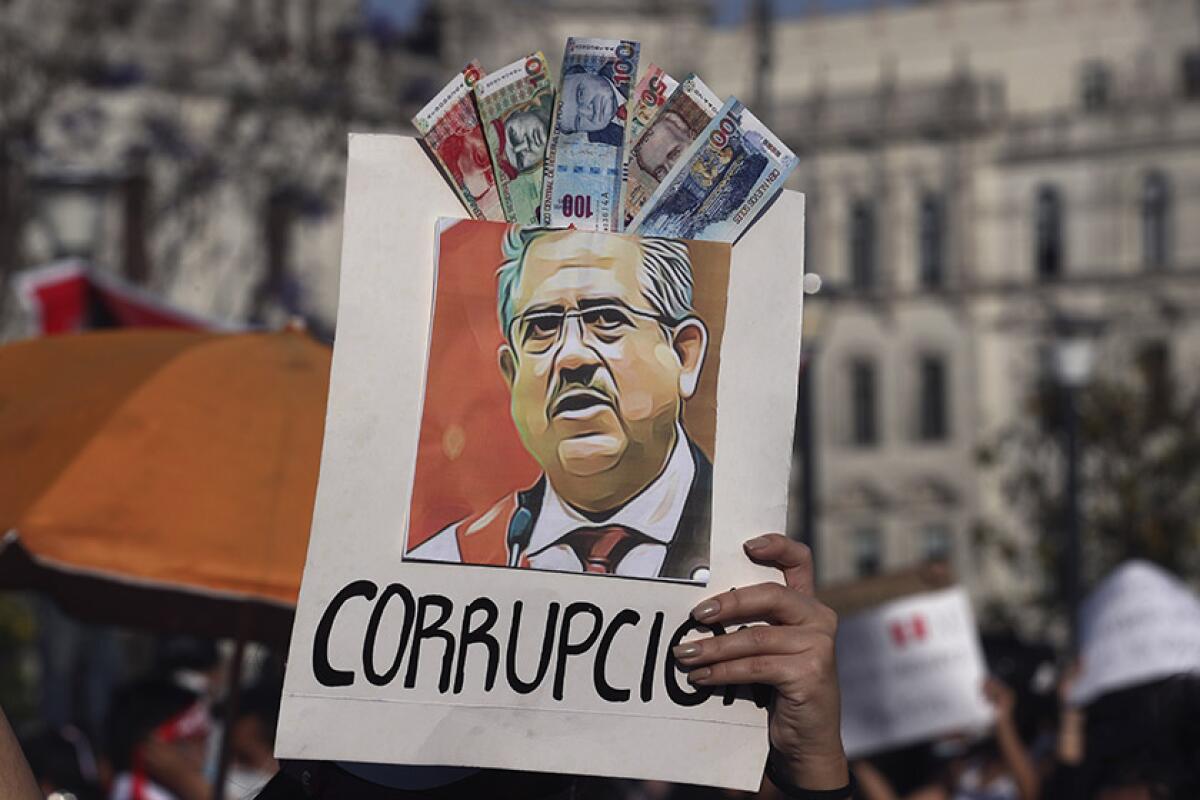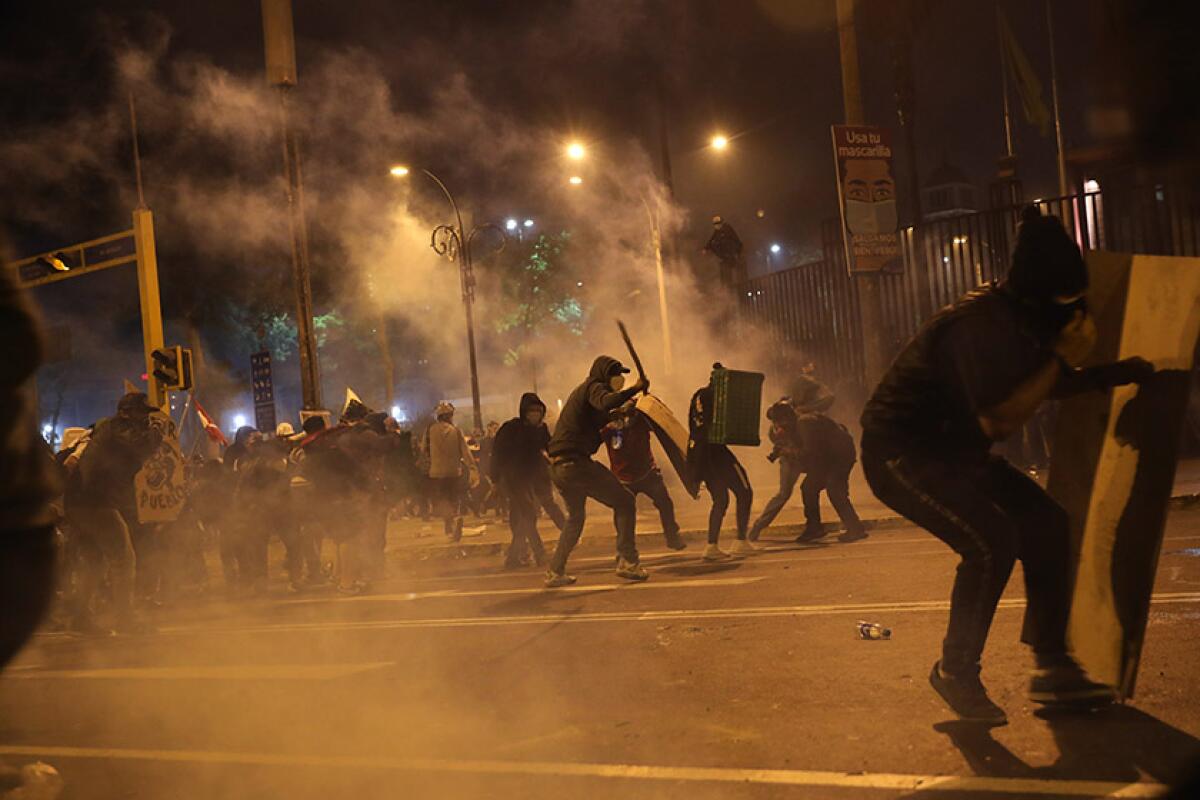Peru’s interim leader announces resignation after upheaval

- Share via
LIMA, Peru — Peru’s interim president announced his resignation Sunday as the nation plunged into its worst constitutional crisis in two decades following massive protests unleashed when Congress ousted the nation’s popular leader.
In a short televised address, Manuel Merino said he’d acted within the law when he was sworn into office as chief of state Tuesday, despite protesters’ allegations that Congress had staged a parliamentary coup.
“I, like everyone, want what’s best for our country,” he said.
The decision came after a night of unrest in which dozens of people were injured after, rights groups say, police used blunt force, tear gas and projectiles to quell the protests.
A network of human rights groups reported that 112 people had been hurt and the whereabouts of 41 others were unknown. Health authorities said the dead included Jack Pintado, 22, who was shot 11 times, including in the head, and Jordan Sotelo, 24, who was hit four times in the thorax, near his heart.
“Two young people were absurdly, stupidly, unjustly sacrificed by the police,” Peruvian writer and Nobel laureate Mario Vargas Llosa said in a recorded video shared on Twitter. “This repression — which is against all of Peru — needs to stop.”

Meanwhile, a rising number of political leaders urged Merino to leave, with at least 13 of his 19 ministers bailing out of his newly formed government. The president of Congress called on Merino to resign immediately and said lawmakers would vote to oust him if he refused.
“We should put above all else the lives of the Peruvian people,” said Luis Valdez, the current head of Congress, who himself plans to resign.
Merino, a little-known politician and rice farmer, became Peru’s leader Tuesday after a stunning vote by Congress to oust popular ex-President Martín Vizcarra. As head of Congress, Merino was next in line to the presidency when Vizcarra was removed. But protesters contend the move amounts to an illegal parliamentary coup and have refused to recognize him.
“We want the voice of the people to be heard,” protester Fernando Ramirez said Saturday night as he banged a spoon against a pot at a protest.
Congress kicked Vizcarra out using a clause dating to the 19th century that allows the powerful legislature to remove a president for “permanent moral incapacity.” Legislators accused Vizcarra of poorly handling the pandemic and held up unproven accusations that, years ago, he took more than $630,000 in bribes in exchange for two construction contracts while governor of a small province in southern Peru.
Prosecutors are investigating the allegations, but Vizcarra has not been charged. A judge on Friday barred him from leaving the country for 18 months.
The ex-president decried the violence on Twitter on Sunday, blaming what he called an “illegal and illegitimate government” for the bloodshed.
“This country won’t let the deaths of these brave youths go unpunished,” Vizcarra wrote.
The protests rocking Peru are unlike any seen in recent years, fueled largely by young people typically apathetic to the country’s notoriously turbulent politics. Protesters were upset at Congress for staging what they considered an illegal power grab as well as whom Merino had chosen to lead his nascent government.
His prime minister, Ántero Flores-Aráoz, was a former defense secretary who resigned in 2009 after police clashes with Indigenous protesters in the Amazon left 34 dead.
Alberto Vergara, a political analyst with Peru’s University of the Pacific, had characterized the new Cabinet as “old, bitter, stale, closed to the world.”
In remarks before Saturday’s upheaval, Merino denied the protests were against him, telling a local radio station that young people were demonstrating against unemployment and not being able to complete their studies because of the pandemic.
Peru has the world’s highest per-capita COVID-19 mortality rate and has seen one of Latin America’s worst economic contractions.
According to the National Assn. of Journalists, there were 35 attacks against members of the media between Monday and Thursday, almost all by police officers. Rights groups have also documented excessive force against protesters, the deployment of tear gas near homes and hospitals and the detention of demonstrations.
“We are documenting cases of police brutality in downtown Lima,” José Miguel Vivanco, director of the Americas division of Human Rights Watch, wrote on Twitter on Saturday. “Everything indicates repression against peaceful protesters is intensifying.”
More to Read
Sign up for Essential California
The most important California stories and recommendations in your inbox every morning.
You may occasionally receive promotional content from the Los Angeles Times.













